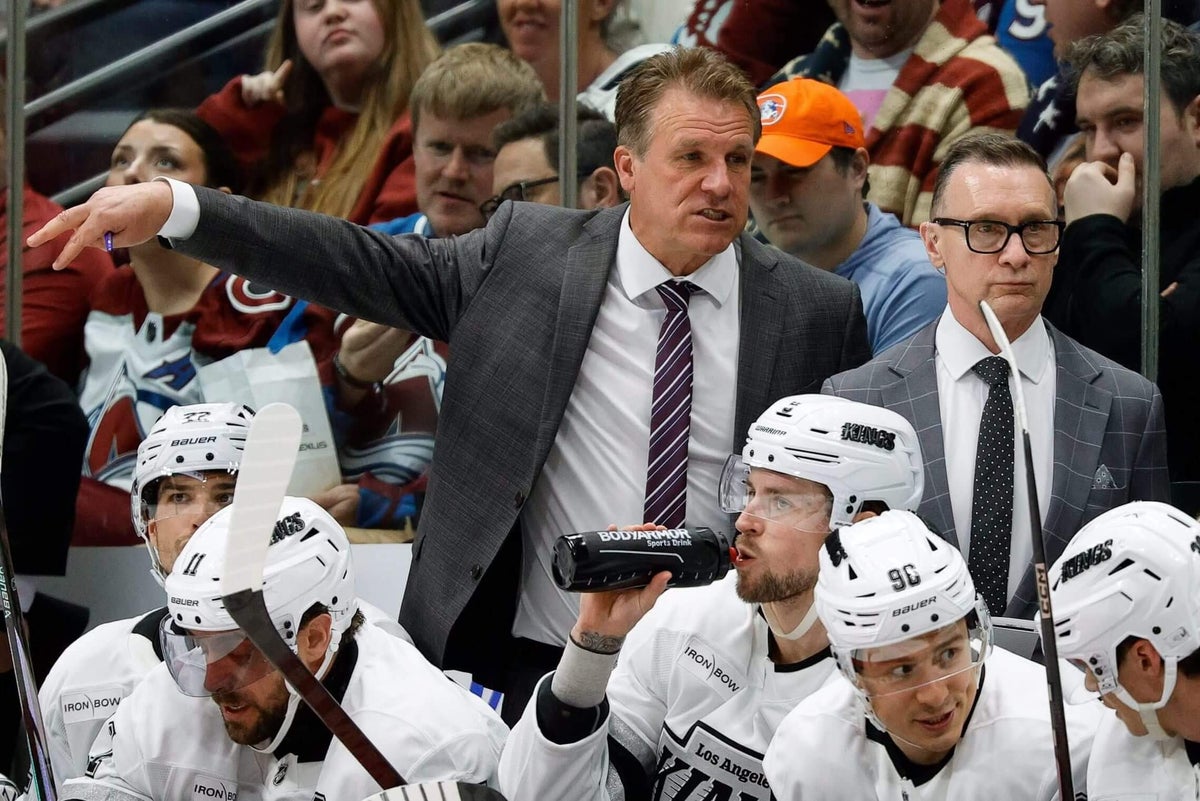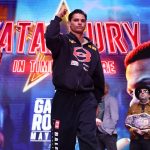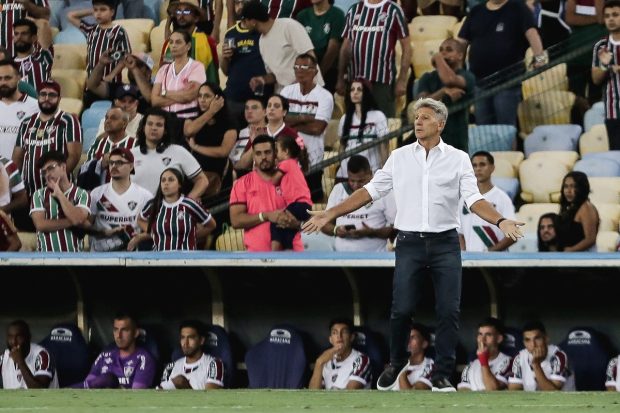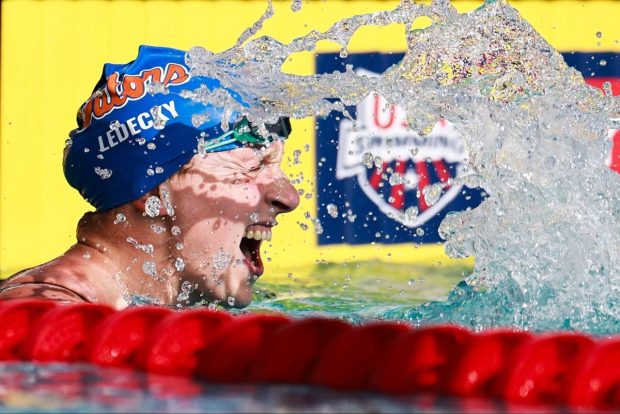

In a pin-drop-quiet visitors’ dressing room inside Edmonton’s Rogers Place on Thursday night, Adrian Kempe offered a reminder of just how close the Los Angeles Kings had come to finally getting past the Edmonton Oilers in the playoffs.
After holding a 2-0 series lead, the Kings lost four consecutive games to the Oilers, perhaps none more crushing than the season-ending Game 6. It was a series that spilled out of their hands when it could have been in the firmest of grips.
Advertisement
“I think this year it was because we couldn’t close the games out,” Kempe said. “We couldn’t hit the empty-netters. We had about nine or 10 tries at it where we didn’t get it. I’m not saying we win those games, we win the series. But it would have been different momentum going into Game 5 and Game 6, for sure.
“So, I think that was the biggest difference-maker. That’s all I’ve got to say.”
The Kings played well enough to beat the Oilers — until they didn’t. Or couldn’t, thanks in part to questionable player usage by coach Jim Hiller. Instead of playing Edmonton in Game 7 at home on Saturday, or even preparing for Game 1 of the second round against the Vegas Golden Knights, the Kings were left again with nagging, uncomfortable questions.
How? Why? And what do you do when the objective of playoff advancement once again isn’t met?
Exit meetings are expected to occur on Monday, as the Kings head into the offseason searching for more answers after a fourth consecutive first-round exit. Let’s look at five key areas that must be addressed before training camp.
Who will make the decisions?
The Kings’ last management change took place one day after the 2016-17 season, when Dean Lombardi was ousted as general manager (along with head coach Darryl Sutter) and Rob Blake was promoted from his assistant GM role. Now, Blake, who doesn’t have a playoff series win during his eight-year tenure, is without a contract for next season.
And if there is a desire to move on from Hiller, the Kings should make their move now, given that seven other NHL teams are already conducting searches and are holding interviews with their candidates. But if the Kings are confident in continuing with Hiller as their coach, they should say so in a definitive manner, so as to quell any uncertainty over his future following a rough series.
Advertisement
Regardless, the Kings could have a hole to fill on the staff if assistant coach D.J. Smith is hired by the Pittsburgh Penguins. Hiller brought Smith in when he took over for Todd McLellan midway through last season. Smith, who coached the Ottawa Senators for four seasons, runs the Kings’ defense. There is a connection between him and Penguins GM Kyle Dubas. While others will be taken into consideration, Smith is emerging as a candidate.
Truly embolden the young players
The Kings’ track record with this in 2024-25 was mixed. On one hand, Quinton Byfield and Alex Laferriere had their roles further elevated. The linemates formed a productive trio with Kevin Fiala, one that became their most dangerous offensive grouping at times. Byfield was a full-time, two-way center who started to get prime defensive matchups. Laferriere became an effective middle-six winger.
On the other hand, Brandt Clarke and Jordan Spence took back seats at different times. Both played a lot when Drew Doughty was sidelined during the first half of the season while recovering from a surgically repaired broken ankle. Both remained in the lineup but saw their ice time diminish after Doughty returned. And it dropped even further in the playoffs, with Spence especially getting scant action and being scratched for a game.
The Kings did promote Samuel Helenius, who became their fourth-line center. But Alex Turcotte was reduced to part-time status and was pulled out of the lineup in favor of Trevor Lewis at a time when Turcotte’s younger legs could have been utilized. All are homegrown players who should take on importance, particularly with the Kings’ farm system lacking in NHL-ready prospects.
Ask pillars to accept smaller roles
Some of this started in the second half of the season, with Byfield getting some of the matchup minutes that previously belonged to Anze Kopitar or Phillip Danault. And while Doughty averaged 24 minutes per game following his return at the end of January, the Kings shuffled him to the second power-play unit when Andrei Kuzmenko arrived, and they had success using five forwards on the first unit.
Advertisement
The Kings must move further in that direction. Kopitar and Doughty can’t play forever — certainly not at the highest of levels — and the club needs to lessen its reliance on their franchise bookends. If Doughty was fine with a diminished power-play role, then the team should discuss a scenario in which fewer minutes would increase his effectiveness as he moves further out from surgery.
The Kings could elevate Byfield to the No. 1 center role and slot Kopitar behind him for what might be his final season. This is why they drafted Byfield at No. 2 overall in 2020. They’ve been patient with his development, and now it’s time to see if he’ll sink or swim as the featured pivot. Kopitar did play less this season, as he averaged 18:57, down from 19:39 last season. Let him and Kempe produce in a less taxing role, or see if Kempe can build chemistry with Byfield and Fiala.
Initiate talks to extend Kempe
The four-year, $22-million contract extension that Kempe signed in 2022 has been an unmitigated bargain. His 139 goals over the last four seasons are 45 more than the next highest goal-scorer on the Kings. That total puts Kempe in the top 20 among all NHL players over that span. But that also means Kempe, 28, who can be an unrestricted free agent in 2026, stands to cash in big-time. The Kings can start negotiations with his camp on July 1.
The good news for the Kings is that his next contract comes at a time when the salary cap rises from $95.5 million to $113.5 million over the next three seasons. Kempe isn’t a superstar, but he has moved into a tier where he’s at or near the level of Nashville Predators star Filip Forsberg, who signed an eight-year extension worth $68 million in 2022. With the rising cap, Kempe stands to approach that — or equal it — even if he hasn’t quite reached Forsberg’s heights offensively.
“I think he’s a big guy that’s been working with his body, and I think you see that it’s paying off right now,” Edmonton defenseman John Klingberg said of Kempe. “I know he’s in the summers working with skills coaches and stuff. Skating and stickhandling and all that. He’s always been very skilled. But I feel like he’s doing everything at a higher pace now. And I think it also comes with feeling comfortable around the team. Around the other leaders of the team and he’s becoming a leader as well.”
Sign Gavrikov, or pivot to Plan B
In March, Blake said the Kings were working on an extension for Vladislav Gavrikov with significant term. There was confidence expressed in getting the shutdown blueliner signed, and there seemed to be momentum as Gavrikov switched agents, going from Dan Milstein to Pat Brisson, a longtime friend of team president Luc Robitaille.
It hasn’t happened yet. Perhaps both sides decided to wait until after the season so that the focus would be on the stretch run and the playoffs, but it’s fair to think a deal could have been worked out before then — if they were close. This could be Gavrikov’s home-run contract, after the two-year extension Blake signed him to after his successful integration after joining the Kings at the 2023 trade deadline.
Advertisement
Gavrikov wants to stay in Los Angeles. The 29-year-old has fit perfectly, excelling in a career-best season in which he played all 82 games while averaging 23 minutes. He bet on himself with the short deal, which had a cap hit of $5.875 million. Now, he stands to possibly reset the market for shutdown defenders. It will be interesting to see what AAV number he comes in at — and whether the Kings will keep him or shift gears.
(Photo: Isaiah J. Downing / Imagn Images)
This news was originally published on this post .









Be the first to leave a comment